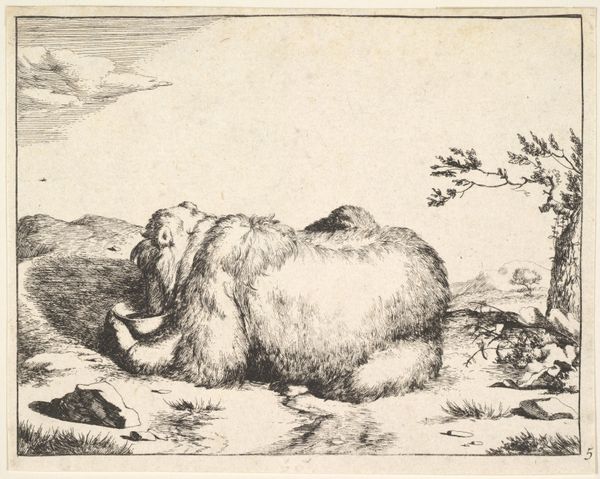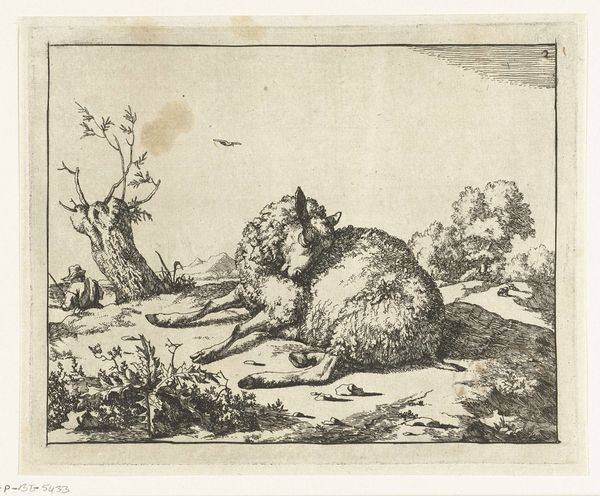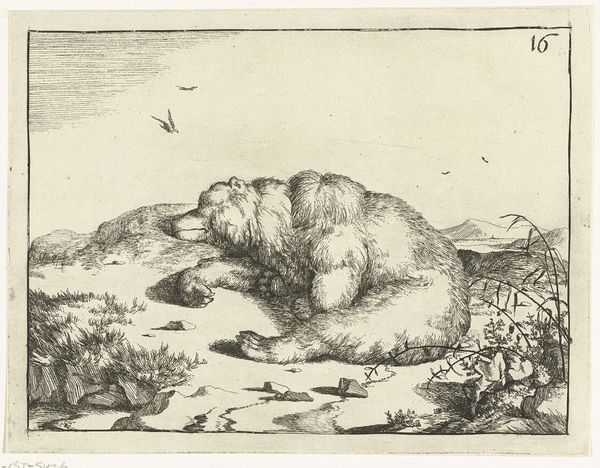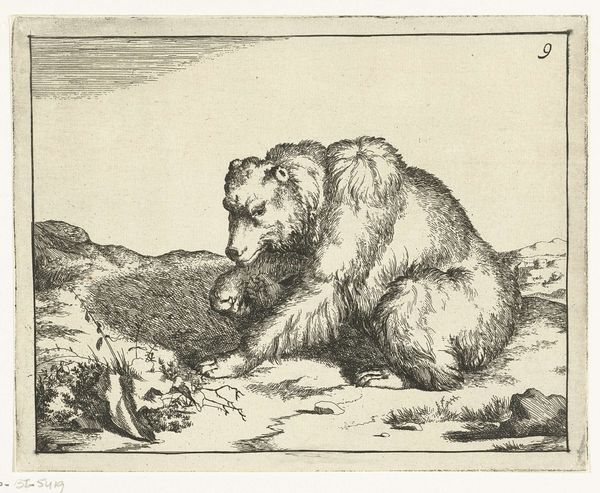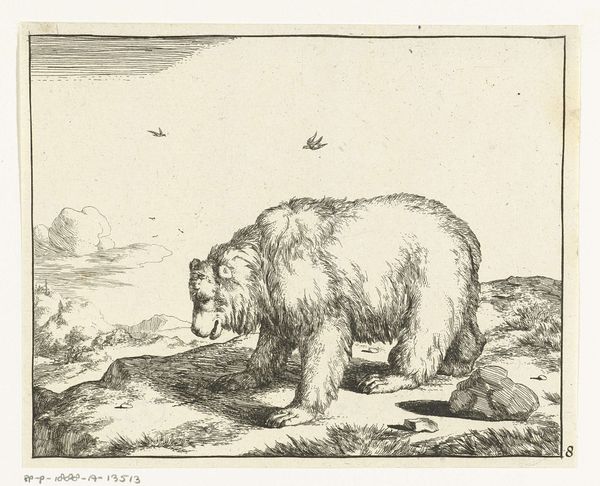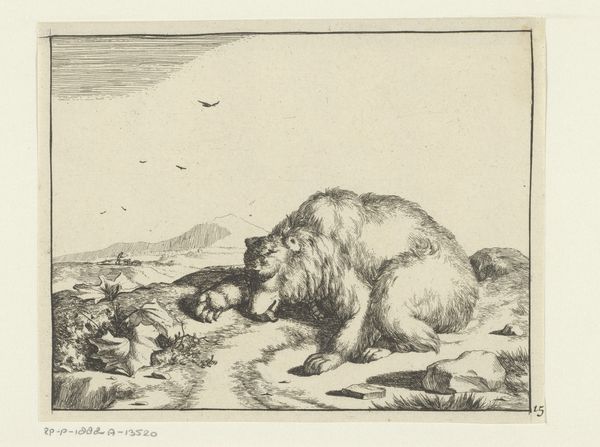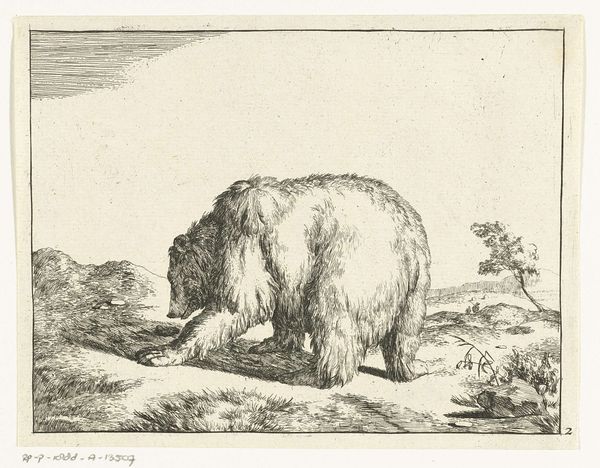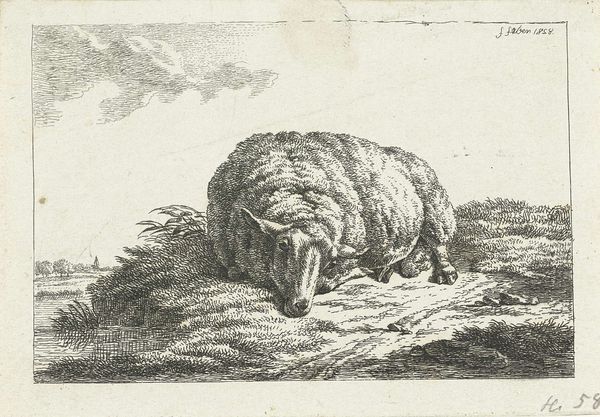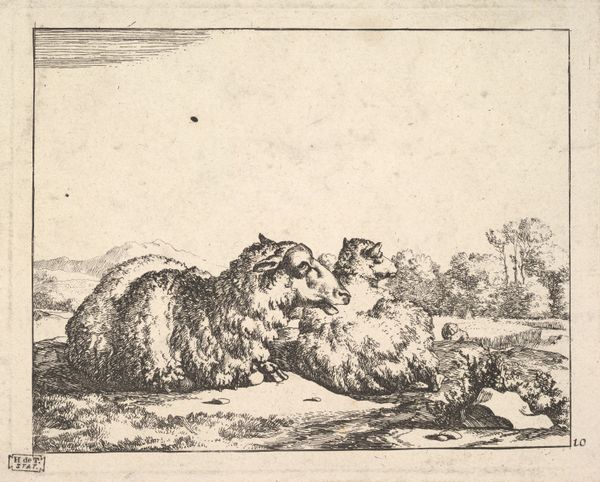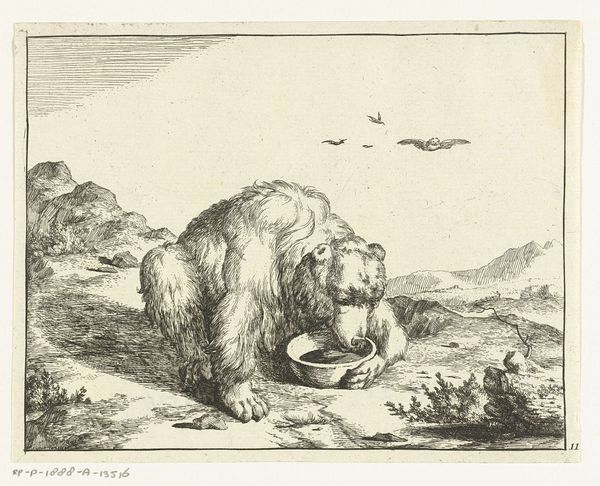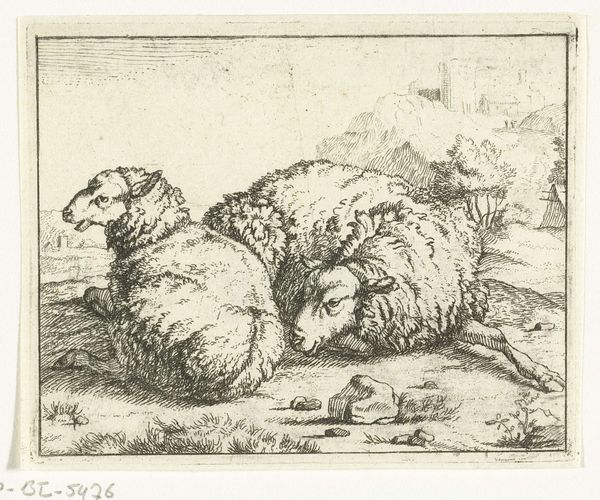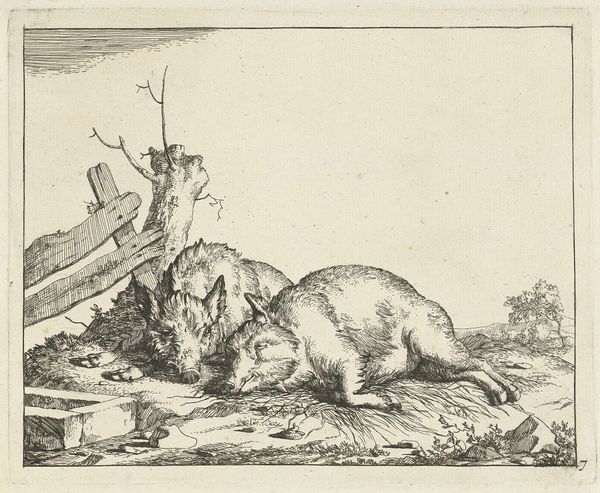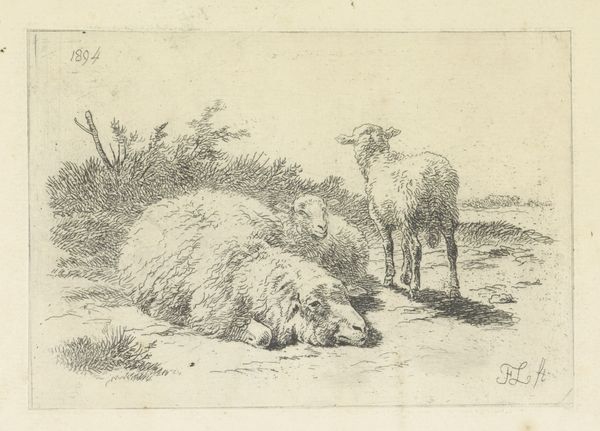
engraving
baroque
pen sketch
pencil sketch
old engraving style
landscape
engraving
realism
Dimensions: height 119 mm, width 154 mm
Copyright: Rijks Museum: Open Domain
Curator: Look at the almost nonchalant detail in this 1664 engraving by Marcus de Bye titled "Liggende beer, iets etend uit zijn linker poot" currently housed here at the Rijksmuseum. The texture rendered is astonishing. What do you think? Editor: My first impression is that it's simultaneously peaceful and melancholic. The bear, lying alone in what seems a vast landscape, has an undeniable air of vulnerability despite its size. There's something almost post-apocalyptic about the emptiness. Curator: The technique here is truly something. Consider the use of etching, for instance. We’re seeing controlled corrosion to bite the image into the plate, revealing a complexity often found in his depictions of animals within broader, imagined landscapes. Were they inspired by actual observation of bears or from some popular lore of the era? What was bear ownership like during that period, and could there be socioeconomic commentary embedded in the display of the bear, who we see feeding on something it’s holding in its left paw? Editor: Exactly. Think about the socio-political position of humans and animals during the baroque period. Bears represented both the wild and a resource. I wonder if de Bye's bear speaks to Dutch colonialism’s impact, as animals were trophies or resources exploited from colonized lands. Does this bear eating reflect a natural right usurped or simply the lonely state of domination and subjugation that occurred in the landscape? Curator: Furthermore, consider the printmaking processes themselves. Who had access to this art form, and how did it circulate these kinds of images? Was the labor divided based on master craftsman or distributed? Editor: That makes me think about this as a commodity too—engravings are reproducible. Who was the intended audience? Did this image challenge or reinforce ideas of class and the relationship of human society with what we still othered as "wilderness"? Curator: It certainly prompts more questions about access, labor, and viewership when encountering this engraving within this contemporary setting. Editor: Absolutely. It really asks us to reconsider those power dynamics across time, to contemplate both what is immediately visible and what histories we bring with us into this gallery today.
Comments
No comments
Be the first to comment and join the conversation on the ultimate creative platform.
